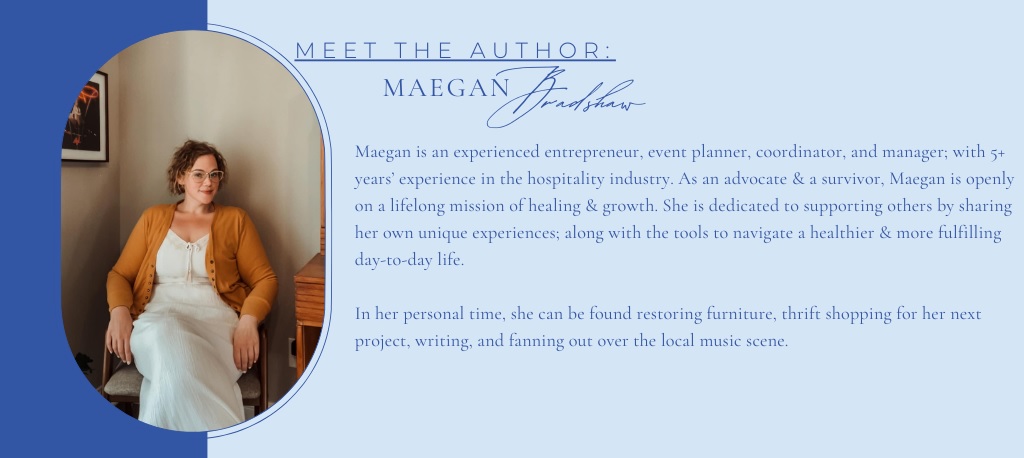Embracing Boredom: Build Resilience against Burnout
Maegan Bradshaw, April 11, 2024
In a fast-paced, hyper-connected world, the pursuit of productivity often leads to a lifestyle that's anything but "boring." However, the concept of intentionally incorporating aspects of 'boredom' into our lives might just be the antidote to combat burnout and bolster our resilience in the face of constant stress and pressure.
Boredom, often considered a negative state, can paradoxically be a gateway to rejuvenation, fostering resilience, and preventing burnout. Embracing a 'boring' routine doesn't mean leading a mundane existence but instead consciously creating space for simplicity and tranquility in our daily lives.
Sounds a little too good to be true? Sound a little overwhelming? As an ADHD, neurodivergent individual, the word “boredom” brings impending doom. It’s instinctual for me to fill my time so boredom doesn’t set in.. Surprisingly, I’m always on the run and stressed to the max. So, what I've learned is that I have to intentionally infuse my life with moments for relaxation (aka a little bit of boredom) to keep on guard against burnout. Here are a few suggestions to sit back, relax, and get bored:
1. Establish Boundaries with Technology: Designate specific times to disconnect from technology. Create "tech-free" zones or hours in your day to allow for moments of mental rest and reflection without constant digital stimuli. I, for example, put my phone down while eating meals so that I am mindfully eating. I do a tech-free hour before bed to wind down by journaling, reading, or pillow talk with my partner.
2. Routine and Structure: Develop a regular routine that includes set times for work, meals, exercise, and relaxation. Having a structured schedule reduces decision-making fatigue and provides a sense of stability. Take an extra step to make your routine more manageable, like meal kit deliveries for easier meal times, simplifying your wardrobe so picking clothes in the morning isn't a big decision, and/or automating your monthly bills so you don't have to worry about remembering to pay them.

3. Embrace Silence and Solitude: Make time for silence and solitude, allowing your mind to rest. Find moments to sit quietly, meditate, or take peaceful walks in nature. These quiet times help in introspection and mental rejuvenation. This is not easily done when beginning this practice. My therapist suggested starting by taking 30 mins throughout the day (5 or 10 mins, here and there.) Then, slowly lengthening those peaceful moments.
4. Engage in Simple Activities: Participate in 'boring' yet calming activities such as reading, knitting, or gardening. These tasks allow for a break from the constant stimulation of a fast-paced life and promote relaxation. After a long day of work and kids, I occasionally pull out a canvas and some paint. I am by no means a Picasso, but there is something very relaxing about that paintbrush hitting the canvas.
5. Practice Mindfulness and Presence: Embrace mindfulness by being present in the moment. Engage fully in tasks and appreciate the simplicity of everyday activities, cultivating gratitude for the ordinary aspects of life. Check out a blog I wrote on mindful practices here.
6. Unscheduled Leisure Time: Incorporate unscheduled leisure time into your routine, where there's no specific agenda or goal. This unstructured free time allows for creativity, exploration, and relaxation. This is a time when you do what feels right in the moment for your body and mind. You could take a warm bath, work on a puzzle, or explore nature.
7. Reconnect with Analog Activities: Consider embracing analog activities such as writing in a journal, sketching, or engaging in puzzles or board games. These activities allow for a break from the digital world and foster mental clarity. Read about tips on creating a self-care journal here.

8. Prioritize Rest and Sleep: Ensure you allocate enough time for rest and quality sleep. Good sleep is crucial in recharging and reducing the risk of burnout. Every body/brain is different, of course. Still, the Mayo Clinic reports that adults who get between 7-9 hours of sleep per 24 hours have significantly fewer health problems than individuals who get less than 7 hours of sleep.
9. Savor the Mundane: Embracing boredom can be as easy as appreciating the simplicity of daily life. Embrace the routines, relish the mundane, and find joy in the ordinary tasks that often go unnoticed. A silly (yet fulfilling) thing I do is stroll to the mailbox and take time to notice the breeze, the smells, the sounds around the neighborhood. This takes less than 2 minutes and is a highlight of my day.
10. Create Space for Reflection: Allocate time for reflection and self-assessment. Journaling or quiet contemplation allows you to process thoughts and emotions, contributing to mental resilience. These practices take just that: practice. So remember to be kind to yourself and reflect back on what is working and what may not be.
By intentionally creating space for 'boredom' in our lives, we can mitigate the adverse effects of burnout and build resilience. It's about reclaiming our mental and emotional well-being by fostering a balanced and sustainable lifestyle.
Embracing 'boredom' isn't about eliminating excitement from our lives; it's about integrating moments of calm, simplicity, and mental rest into our routines. Through these intentional breaks from the constant hustle, we can recharge, reconnect with ourselves, and ultimately build the resilience needed to navigate life's challenges without succumbing to burnout.







